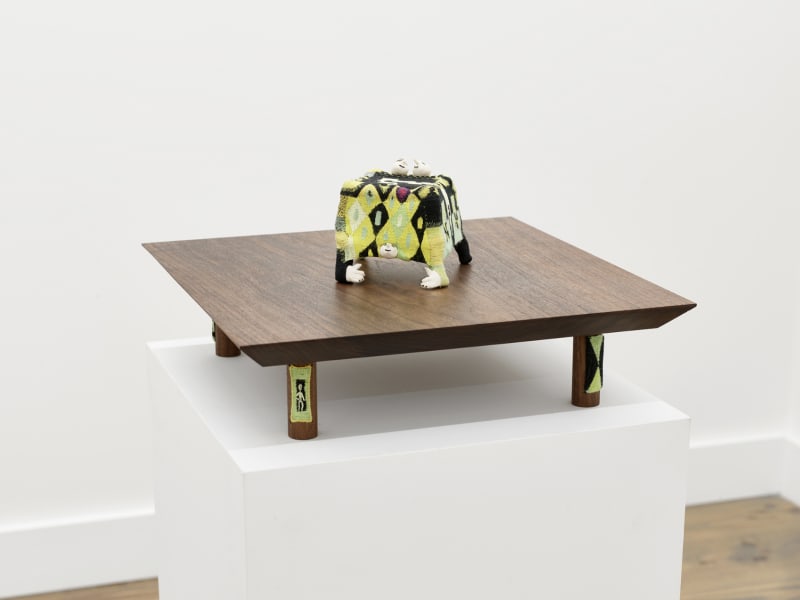Before crossing the street to Rebecca Camacho Presents to see Cyrano, an exhibition of new work by the Richmond-based artist Em Kettner, I recommend passing through the redwood grove at the base of the Transamerica Pyramid. The redwoods’ size and smell will calm your pace after hustling through the Financial District, and set the stage for viewing the seven intimately scaled sculptural works in ceramic, textile and wood.
Kettner’s tender vignettes are drawn from the classic story of Cyrano de Bergerac, who believes his large nose makes him unloveable. So he woos the woman he loves for another, more handsome man who is too inarticulate to voice his own affection. Installed in the gallery’s smaller project room, these intricate objects ask for slow reflection through both their construction and viewing — like that needed to untangle our own judgements and expectations from our relationships with others.
While Kettner has been living and working in the Bay Area for several years, and has shown her work nationally and internationally, this is her first solo presentation in her home region. Kettner’s practice contemplates the care and vulnerability necessitated by disability. While other bodies of work have considered the power leveraged by medical institutions or the beauty of partnership and community within these dynamics, Cyrano introduces the way our self perceptions impact our ability to support our own and others’ desires.
The works are titled for and symbolically depict significant moments in the original play in glazed ceramic tiles and miniature but elaborate handwoven textiles. We see figures gaze, whisper, and steal embraces through diamond lattices and lit doorways that emphasize their yearning while keeping them at a distance from us and each other. The reward for crossing these various thresholds are tender features, such as the rosy faces and naked buttocks illuminated by the light of the moon in The Lost Love (2025) and Moon Wooing (2025) — cheeky reminders of the vulnerability and imperfection that is revealed by intimacy, despite its sweetness.
Kettner’s practice originates in drawing, as evidenced in the illustrated porcelain tiles, but has grown to involve her own intuitive form of hand weaving in which she constructs the weft and warp around the limbs of her own ceramic figures or within wooden frames. The Levitation (2024), and the exhibition’s namesake work, Cyrano (2025), employ this technique to unite multiple figures into singular units sheathed in brightly patterned textile. Delightfully sensual and almost mischievous in appearance, these three-dimensional works expand the exhibition’s narrative into the space of our own experience.
Both sculptures are shown on beautifully grained, oil-sealed walnut, a rich and warm context separate from the white gallery walls. For the wall-based works, this same wood becomes a tableau in which the illustrative tiles and textiles are lovingly held. Revealing windows are cut into the wood at beveled angles and with rounded edges so that the wood is not just a frame, but a sculptural element that shapes our engagement with what is held within. Each cut-out has been placed thoughtfully within the flow of the wood grain so that the human story is visually represented within the scope of time embodied by the natural world.
-Claire Frost



